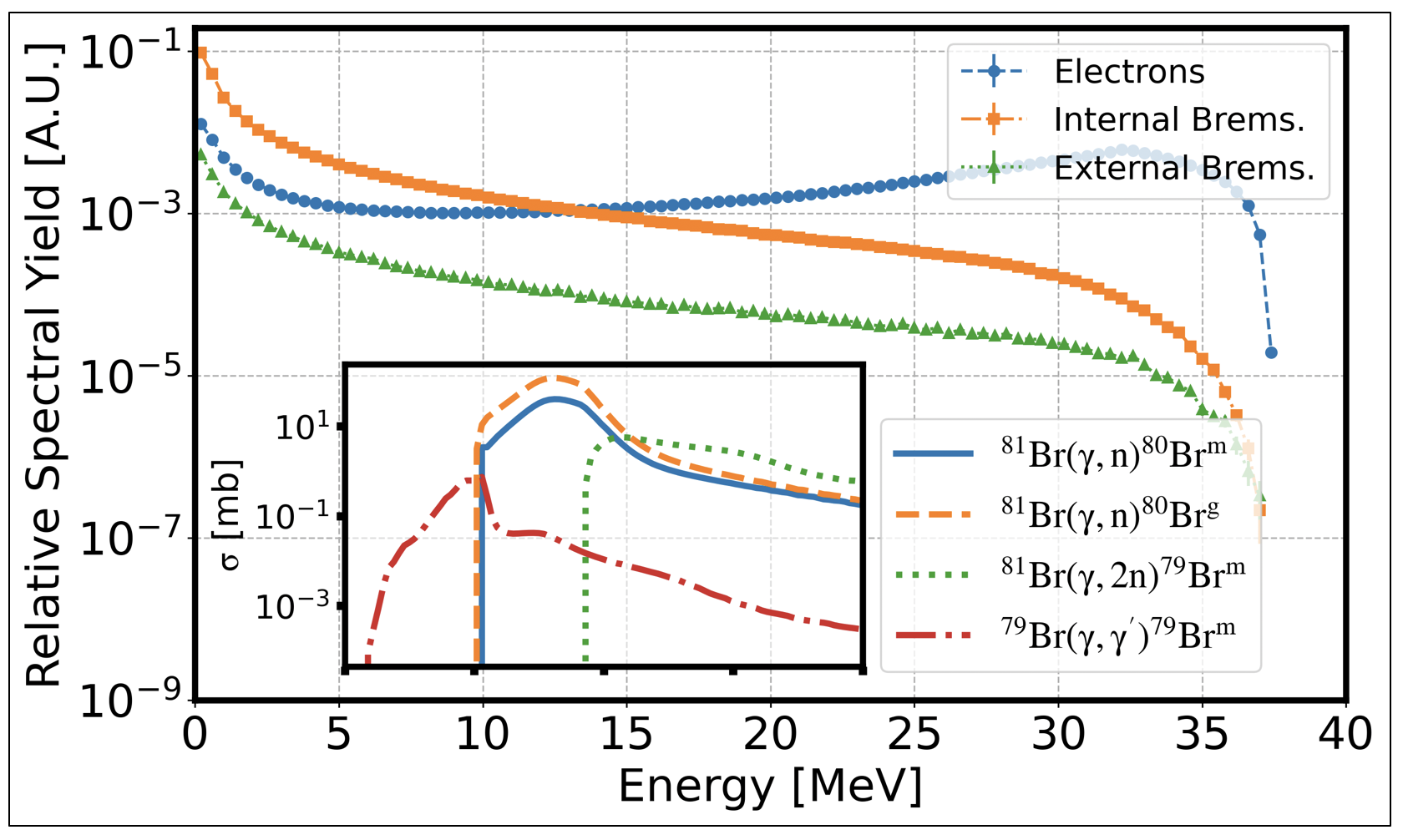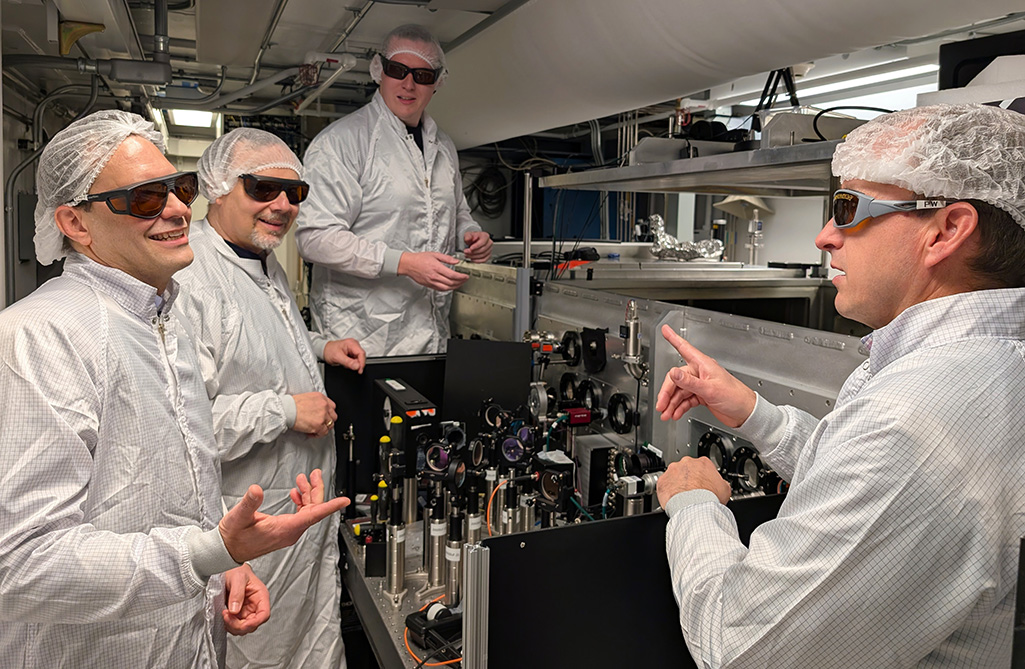Scientific Achievement
Researchers from the Accelerator Technology & Applied Physics Division and Nuclear Science Division at Lawrence Berkeley National Laboratory (Berkeley Lab) have demonstrated an enhanced population of isomer states (metastable states of atomic nuclei with a different energy and half-life than other states of the same nucleus) in atomic nuclei using ultrashort electron bunches from a laser-plasma accelerator (LPA). This work has identified a potential new and improved method for populating isomer states.
Significance and Impact
This work demonstrates an alternative method for isomer production by highlighting the capability of LPAs, with their characteristic ultrashort electron beams, to enable novel nuclear physics experiments. With this new LPA approach, further study of these nuclear reactions could significantly impact our understanding of the processes behind astrophysical nucleosynthesis, isotope production for nuclear medicine, spent-fuel storage mitigation, non-proliferation, and national security.

Research Details
Ultrashort electron beams enable enhanced probing of short-lived nuclear states
LPAs are being explored for nuclear physics applications due to their ability to enable compact, high-brightness, ultrashort (~10s of a femtosecond) bunched electron beams and the radiation sources they drive (X-rays, muons, gamma rays, terahertz emissions, positrons, etc.). The ultrashort, high-charge qualities of LPA electron beams allow for innovative nuclear physics research by providing parameter ranges previously inaccessible with traditional accelerators. With lifetimes ranging from 10-12 to 10-15 seconds, highly excited quasi-continuum nuclear states require ultrashort bunches to probe and manipulate their dynamics. This “probing” can occur through nuclear-plasma interactions (NPIs), in which the nucleus is excited directly or indirectly by energetic free electrons and the perturbed atomic environment.
Coupling ultrashort beams with the nuclear quasi-continuum provides a novel method for isomer population

Simulated spectra at the LaBr3 active target comparing the internally generated bremsstrahlung (brems.) and electron scattering spectrum following direct electron irradiation with external brems. from the converter. Calculated with FLUKA for a flat distribution electron beam at 35°æ2.5 MeV. The inset shows TALYS calculated microscopic cross sections from adjusted best fit parameters, with the x-axis depicting the same energy range as the larger plot.
NPIs have been studied in the context of populating very low-lying discrete nuclear states through resonant nuclear-atomic interactions with nearby states. However, these studies have extremely low yield rates for the population of isomeric states. In this work, the researchers, therefore, focused on probing NPIs in high-lying (quasi-continuum) nuclear states by comparing the population of long-lived, large angular momentum isomer states following irradiation by bremsstrahlung photons and LPA electron beams in solid-density lanthanum bromide targets. They demonstrated that direct irradiation with ultrashort bunch electron beams give a factor of ~4.3x greater population of a long-lived isomer state relative to the ground state in the bromine-80 nucleus when This significant modification to the population of high-spin states may indicate the presence of NPIs enabled by ultrashort LPA electron beams interacting with the significantly increased nuclear level density available in the quasi-continuum
A new method of isotope production for a broad set of applications
Exploring novel schemes for manipulating isomeric states in nuclei, such as the method proposed in this manuscript (utilizing femtosecond LPA electron beams), holds potential relevance, pending further investigations, to various applications, including spent fuel management, nuclear medicine, and space exploration. For instance, by injecting significant angular momentum into Am-242m (a radioactive isotope of americium) nuclei, a byproduct of the nuclear fuel cycle that leads to the formation of long-lived radioisotopes, it may be possible to deliberately induce its decay to the ground state, which has a much shorter lifetime and can serve as a source for plutonium-238—highly desirable as a power source for spacecraft. Similarly, the team is investigating alternative production methods for radioisotopes relevant to nuclear medicine for cancer therapy.
Contact: Robert Jacob
Researchers: Robert Jacob, Jeroen van Tilborg, and Carl Schroeder (ATAP’s BELLA Center); Lee Bernstein (Nuclear Science Division); and Joshua Brown (Department of Nuclear Engineering, University of California, Berkeley)
Funding: This work was supported by the U.S. Department of Energy (DOE), National Nuclear Security Administration, Defense Nuclear Nonproliferation R&D (NA-22), and the DOE Office of Science, Offices of High Energy Physics, and Nuclear Physics, as well as a philanthropic gift from Google LLC.
Publication: Robert E. Jacob, Speero M. Tannous, Lee A. Bernstein, Joshua Brown, Tobias Ostermayr, Qiang Chen, Dieter H G. Schneider, Carl B. Schroeder, Jeroen van Tilborg, Eric H. Esarey, and Cameron G R. Geddes. “Enhanced isomer population via direct irradiation of solid-density targets using a compact laser-plasma accelerator,” Phys. Rev. Lett. 134, 2025. https://doi.org/10.1103/PhysRevLett.134.052504
For more information on ATAP News articles, contact caw@lbl.gov.
